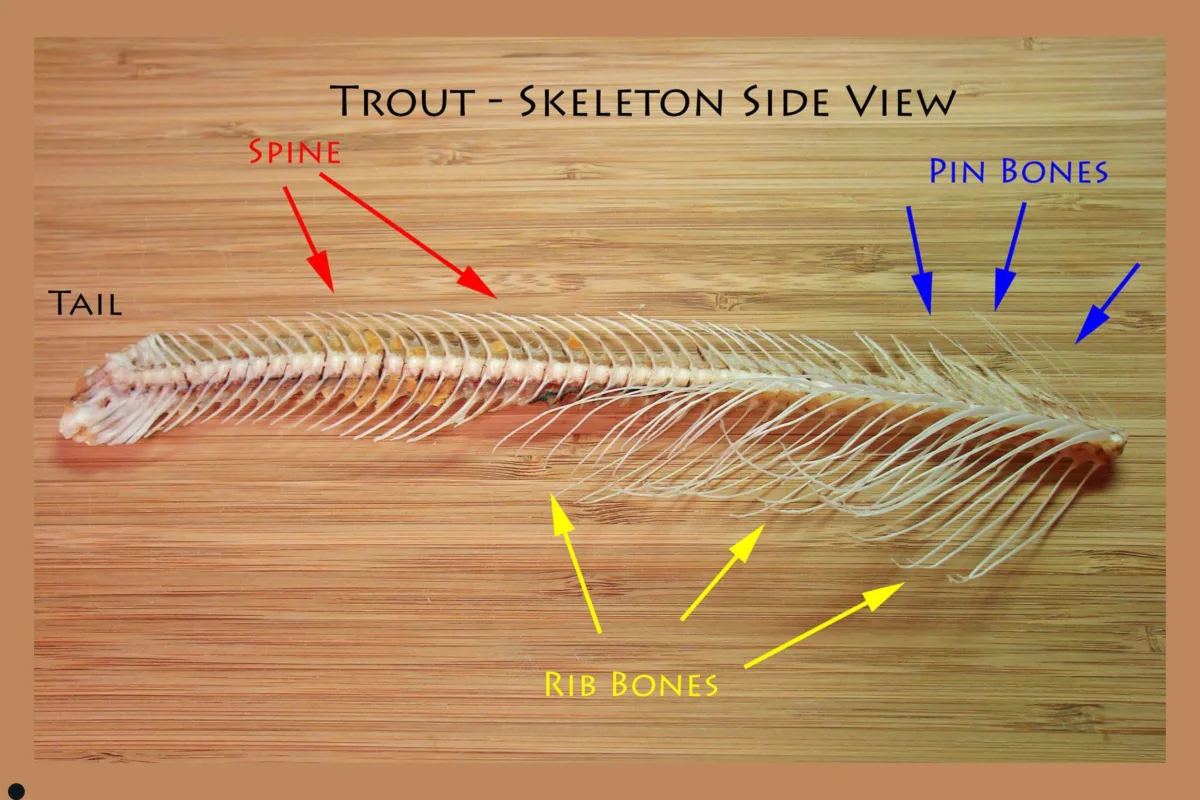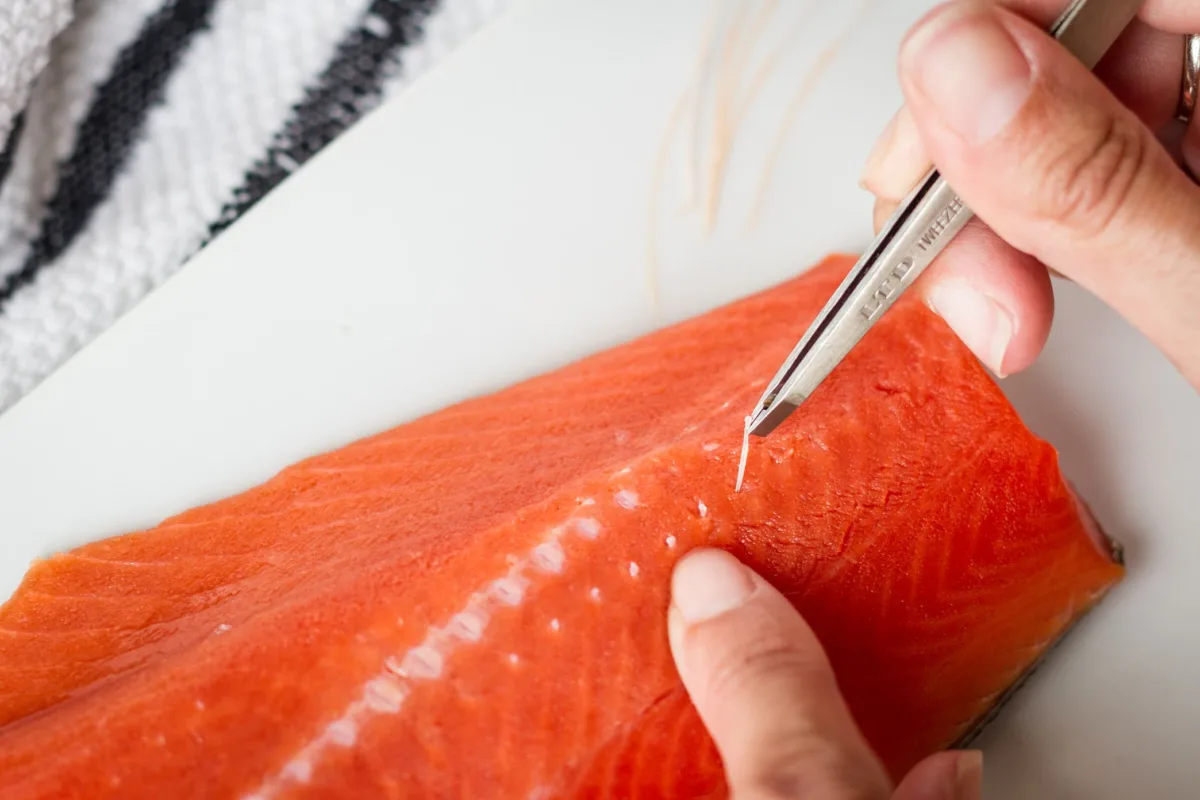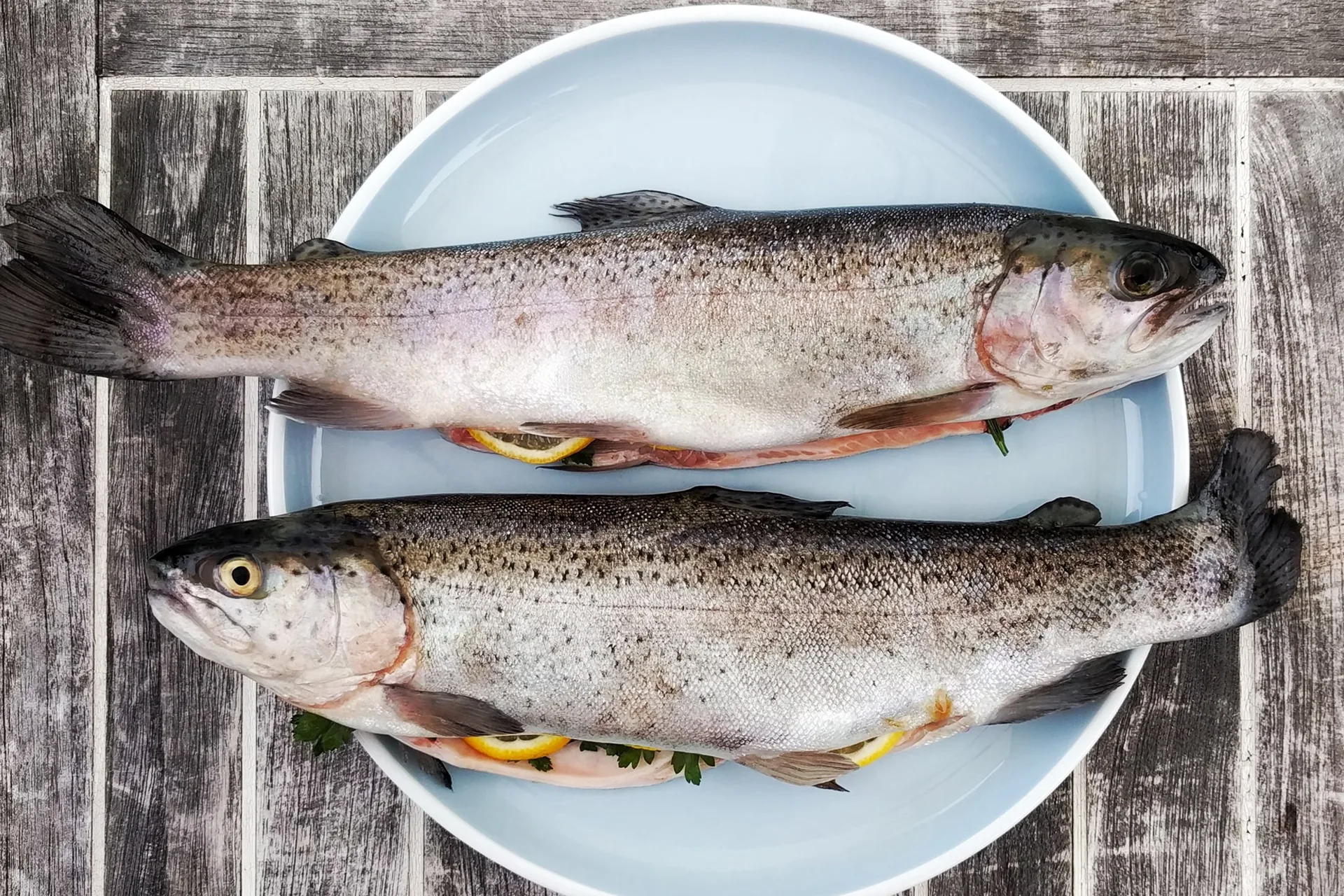T-bones are another name for Pin Bones. Salmon and trout are full of Pin bones. Pike also has a layer of horizontal bones that make fileting tougher. T-Bone or loin cut filets are formed when you cut the fish into steaks, like T-bones. The bones are still in place but usually the fish are big enough to make picking toothpick sized bones out easily.
My Uncle Jim loved to eat fish. As kids, my cousins and I spent hours catching bass, sunnies, bluegills, and catfish off the boat dock in the Potomac River of Maryland. My grandmother expertly filleted every fish we caught to perfection.
Even the best fish mongers leave an occasional fish bone. Uncle Jim always kept a loaf of white bread nearby in case he found a fish bone. When he bit into a bone, slices of bread were shoved into his mouth as he would gak up the stray fishbone.
Most of us that eat crabs and fish just spit out the piece of shell, or occasional bone. The filets are still better than aa whole fish and a stray bone just happens. No biggie!
Meatstick, Handy Randy, and I have been catching BIG rainbow trout at Canyon Ferry reservoir. These trout are salmon sized. Handy loves to smoke them. Meatstick eats the filets sparingly and does not like any fishbones. The Canyon Ferry bows that we keep are 18-30 inches long. When fileted, the meat is bright orange, and wonderful. I enjoy cooking them like salmon and using my air fryer.
Since the trout are big and thick, there is always a bone or two that gets away. Montana Lin gets turned off fast when she finds a fish bone in her dinner. She doesn’t freak out like Uncle Jim, but the meal can be ruined when you end up with too many pin bones on your palate.
Pin bones are horizontal bones that come off the fish vertebrae. These calcified bones have nerve endings that sense the proximity of other fish nearby. Skeletal fish bones aid in support, structure, buoyancy, and locomotion.

When you cook/fry small fish filets, the fine bones may dissolve or soften enough to not be noticed. Most random fish eaters never notice the small and soft pin bones. They are like bones from a can of sardines.
When you share fish with others or prepare it for your friends and family, take the extra steps to make the meal completely bone free and perfect.
The perfect filet requires a sharp and long flexible filet knife. The monger needs to feel and hear the bones as they cut off the filet and remove the skin. You can cut the pin bones in half and reduce any encounter or slice out the entire line of bones. This turns the slab filet into fish sticks but gets rid of the pin bones.
Deboning a fish will also remove the pin bones but works best with smaller fish.

The BEST solution is fish bone tweezers. You can also use needle nose pliers, but the tweezers work better. For around 5 dollars, you can get a set of 2 tweezers. One will be a straight end and the other is angled. The angled end works best for me. Once the filet is done, I take my finger and feel for the pin bones or any other sneaky bone. Simply grab and pull the stray bone out. It takes a few minutes to inspect and remove the stray bones, but Uncle Jim would be happy and proud.
You also want to remove any fat from where the lateral line was, the fin bases, and tail was connected. Trim the filet for appearance. RINSE the filet thoroughly and dry before cooking.
Serve bone free fish!
Montana Grant





